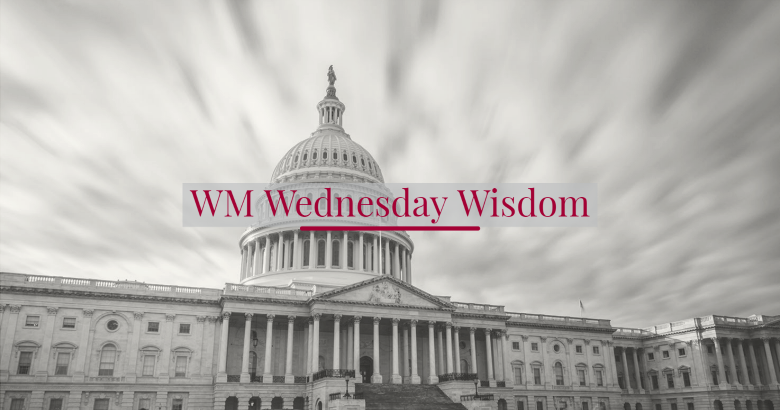Senate Passes $1.2 Trillion Infrastructure Bill, What’s Next?
On Tuesday, August 10, 2021 the Senate passed a $1.2 Trillion bipartisan bill. The bill, called the Infrastructure Investment and Jobs Act, features $550 billion in new federal spending over five years.
The bill will now go to the House of Representatives for approval before President Biden can stamp his approval. Here’s what we know so far about the latest version of the agreement, according to the CBO report, an updated fact sheet provided by the White House, as well as the bill text and 57-page summary released last week.
Roads and Bridges
The package calls for a $110 billion investments for roads, bridges, and major infrastructure projects. Included is $40 billion for bridge repair, replacement, and rehabilitation.
Transit and Rail
The deal would provide $39 billion for the modernization of public transit, including the repair and upgrade of existing infrastructure, increasing accessibility to stations, expanding service to new communities and modernizing rail and bus fleets. The plan calls for replacing thousands of vehicles with zero-emission models.
The deal would also invest $66 billion in passenger and freight rail. The funds would eliminate the maintenance backlog of Amtrak, modernize the Northeast Corridor line, and expand service to areas outside the northeast and mid-Atlantic regions.
According to the White House, it would be the largest federal investment in public transit in history and in passenger rail since the creation of Amtrak 50 years ago.
Broadband
The nation’s broadband infrastructure would benefit from a $65 billion investment, which aims to lower the cost of internet service and creates a permanent federal program to help low-income households gain internet access.
Airports, Ports and Waterways
The deal would invest $17 billion in port infrastructure and $25 billion in airports. These monies will be used towards repair and maintenance backlogs, reduced congestion and emissions near ports and airports and to promote electrification and other low-carbon technologies.
Electric vehicles
The bill would provide $7.5 billion for zero- and low-emission buses and ferries, with a goal to bring thousands of electric school buses to districts across the country. Another $7.5 billion would go to building a nationwide network of plug-in electric vehicle chargers.
Power and Water Systems
- $65 billion would be provided to rebuild the electric grid, including building thousands of miles of new power lines and expanding renewable energy;
- $55 billion would be provided to upgrade water infrastructure, including replacing lead service lines and pipes so that communities have access to clean drinking water; and
- $50 billion would go toward making the system more resilient to the impacts of climate change and cyber-attacks.
How Will It All Be Paid For?
While lawmakers claim that the bill pays for itself, according to the Congressional Budget Office the bill would add more than $250 billion to the federal deficit over the next decade. The White House and Congress will need to continue to look for ways to pay for this bill as well as further spending bills.
President Biden said in a statement that the bill won’t raise taxes on people making less than $400,000 a year and does not include a gas tax increase or fee on electric vehicles. He initially called for raising taxes on corporations to fund the infrastructure investments — but that proposal did not make it into the latest package after strong opposition from Republicans.
The White House has proposed several financing sources for the spending, one of which is providing the Internal Revenue Service (IRS) with nearly $80 billion so that it can close the so-called “tax gap.” The tax gap is the difference between the estimated amount of taxes that the IRS is owed and the amount that it receives each year. Closing this gap, the White House argues, will help the government recoup billions of dollars that it is already owed and use those funds to fuel new initiatives.
WM Wisdom:
In June 2021 the Biden administration released their “Green Book” of tax proposals. While none of those proposals are incorporated into the current bill WM expects that Congress will be considering and acting on proposed tax changes soon as a way to pay for the increased spending. Increased funding of the IRS will result in more compliance audits, specifically on businesses and individuals making more than $400,000 per year.
We will continue to monitor legislation and report on any developments that may impact your business and financial planning.
DISCLAIMER: The WM Update, WM Wednesday Wisdom, WM Daily Update COVID-19, COVID-19 Business Resources, COVID-19 Client News Alerts and other related communications are intended to provide general information, including information regarding legislative COVID-19 relief measures, as of the date of this communication and may reference information from reputable sources. Although our firm has made every reasonable effort to ensure that the information provided is accurate, we make no warranties, expressed or implied, on the information provided. As legislative efforts are still ongoing, we expect that there may be additional guidance and clarification from regulators that may modify some of the provisions in this communication. Some of those modifications may be significant. As such, be aware that this is not a comprehensive analysis of the subject matter covered and is not intended to provide specific recommendations to you or your business with respect to the matters addressed.


